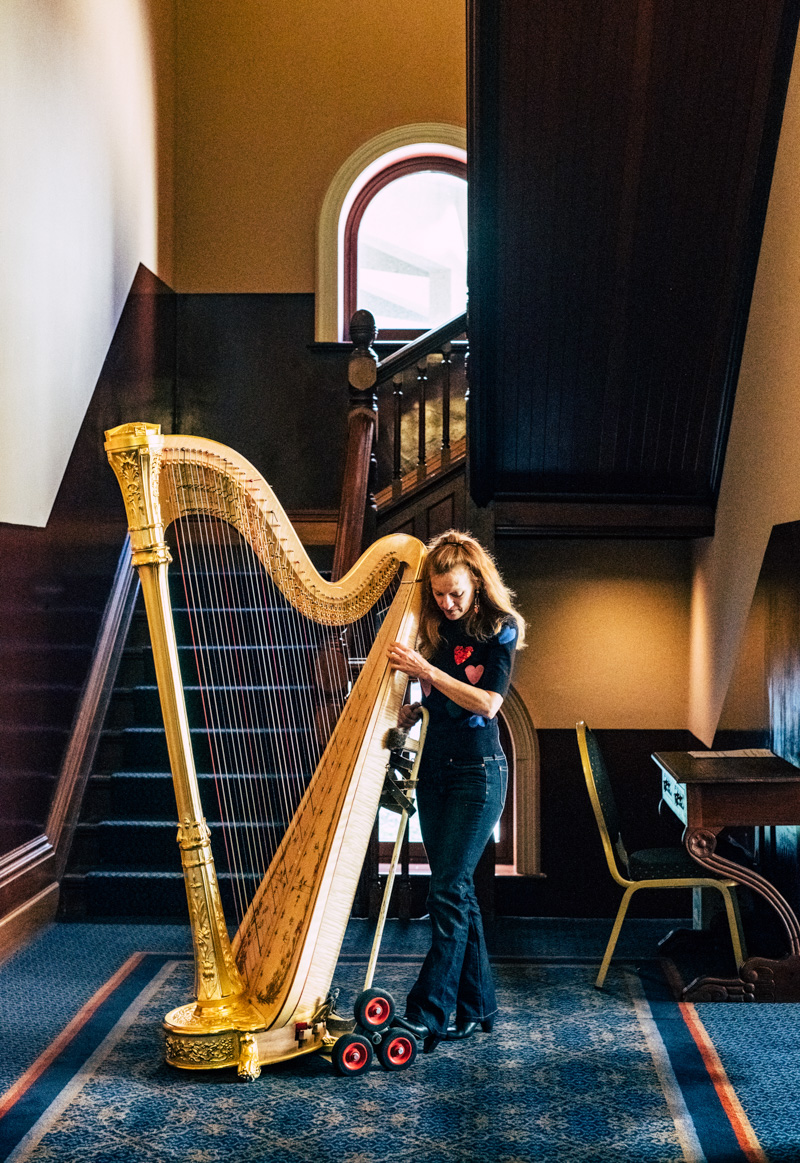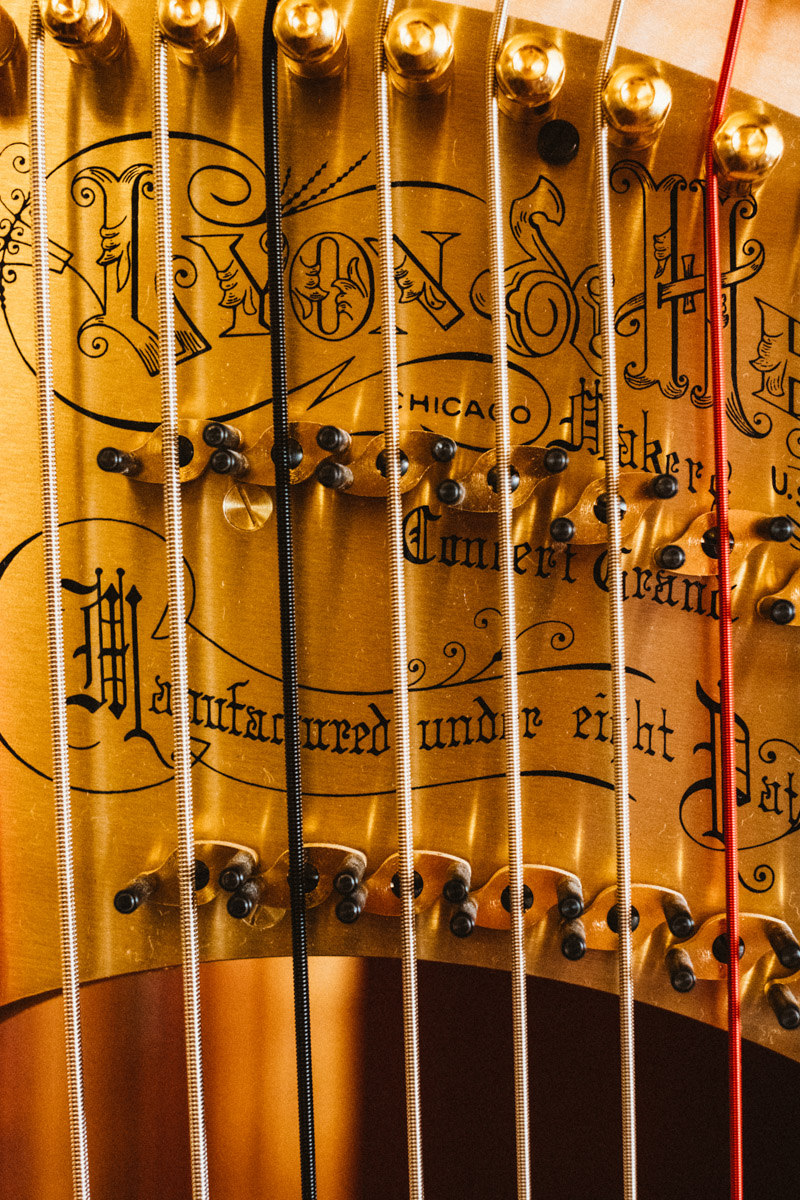To become a full-time harpist, Suzanne Handel left her home in New York and journeyed around the world to settle in Adelaide.
How to be a harpist
“I do remember as the plane was descending I was asking the person next to me, ‘where’s Adelaide? Where is it?’,” says Suzanne Handel – who flew into the city in the early ’90s, having just been hired as the Adelaide Symphony Orchestra’s (ASO) harpist.
“The person was saying, ‘it’s right down there’, but I couldn’t see anything – there was nothing there. And then I cried, because to me it was really nothing, compared to New York.”
But, more than 20 years later, Suzanne feels differently about Adelaide. Now, it is her home and the place where she’s built a long-term career alongside an array of collaborators.
“It’s a very good orchestra, it always has been and I think it’s even gotten better over the years because we have some really great players and we have a really good principal conductor [Nicholas Carter] too,” says Suzanne.
Her decision to make the move to Adelaide early in her career was influenced by the kind of work available in New York.
Suzanne grew up in that much-storied city as the daughter of a pianist and a composer.
She played the harp from such an early age that she can’t even recall when she first became aware of the instrument, but does remember that her early enthusiasm for it was tied to its physicality.
“It’s a very athletic instrument and as a kid I was running around all the time. You use your feet, you use your arms, you use your whole body – so that’s part of it,” says Suzanne.
Studying at the internationally-renowned and recognised Juilliard School from the age of 13, Suzanne went on to earn her Masters there and then began the life of a working musician.
“When you’re at Juilliard you practice all the time – you’re doing recitals, you’re doing chamber music. The only difference is once you have a job you get paid for it,” she says.
Suzanne has her own harp at home, which she uses for practice and her own performance. The ASO has three harps in rotation – the top tier harp is brought out for big shows, the mid-range is used much of the time, and the bottom harp is used for outdoor shows or in other conditions which might cause damage.

Suzanne moves the ASO’s top harp through the Town Hall before a concert
“In New York there is a lot of work but none of it is full time. There’s only a few jobs that are full time, and of course someone already has them.”
So when she saw an ad for a Principal Harp with the ASO in a musician’s union paper, Suzanne applied.
Deciding to take the job when it was offered was not easy – it meant leaving behind her family, her friends, and – importantly – her cat. But, understanding that life as a musician meant full commitment, she said yes.
“It’s kind of a 24-hour profession,” she says. “If you have a concert at night, during the day your head is just going in circles because you know that night you have to play.”
But – of course – there is room in Suzanne’s life for a few things beside the harp. Many of them are still musical though.
“I love my ukulele even more than the harp,” she says with a laugh. “The ukulele is great because it’s only got four strings and it takes 30 seconds to tune, whereas the harp has 47 strings, and they all need to be in tune.
“We have an ASO choir that is just for fun and sometimes I play the ukulele with that.”
But even with the kind of familiarity created by playing in the orchestra (and its choir, of course), for more than two decades, Suzanne says there are still challenges to being the Principal Harp.
One is ensuring that she is constantly developing and striving to be better, something she says her fellow musicians help her achieve.
“You push yourself mostly for each other,” she says, “because we know how we’re supposed to sound. You just have to do your best every time, even in rehearsals.”

Every harp Suzanne has ever played was made by Lyon & Healy in Chicago




